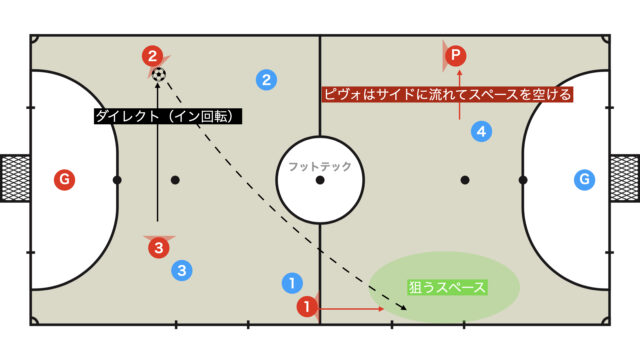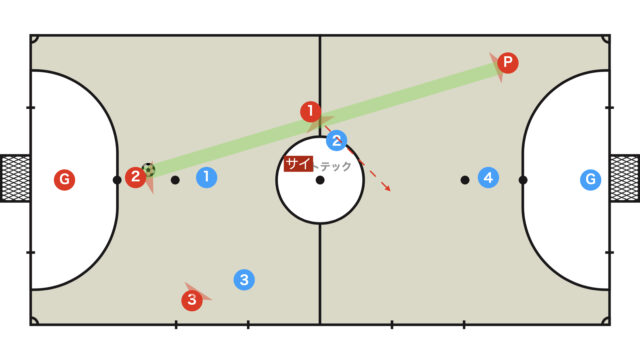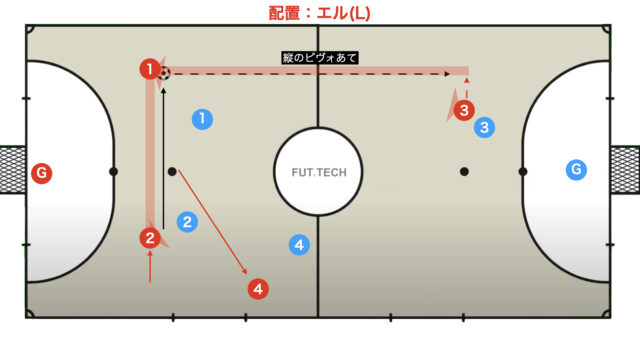The 3-1 (diamond) formation featuring the pivo is the most common tactic in futsal—a simple yet powerful strategy used across all categories, including national teams.
However, while employing the 3-1 formation, many may encounter the following concerns:
“How can we create a more robust attack using the pivo?”
This article provides a thorough explanation—with diagrams and videos—of the concept behind the threesome using the pivo in a 3-1 formation and specific methods to break down the defense.
Overview
First, aim to break through using the duo
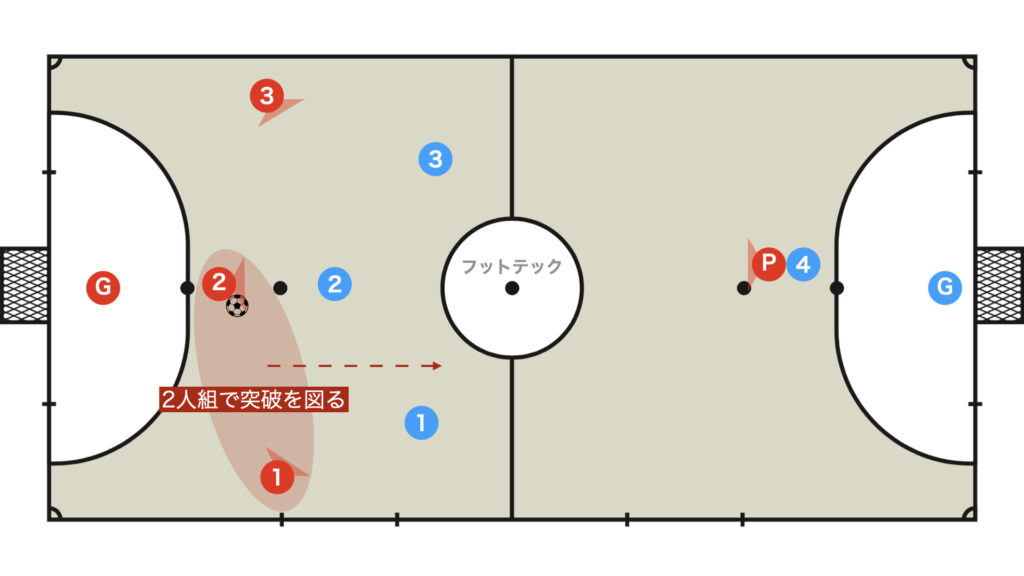
Rather than recklessly aiming for a pass to the pivo, first focus on breaking through with the horizontal duo (fixo-ala).
- One-two (backdoor)
- Parallera
- Support (block or curtain)
- Diagonal
When the duo cannot break through: use the pivo
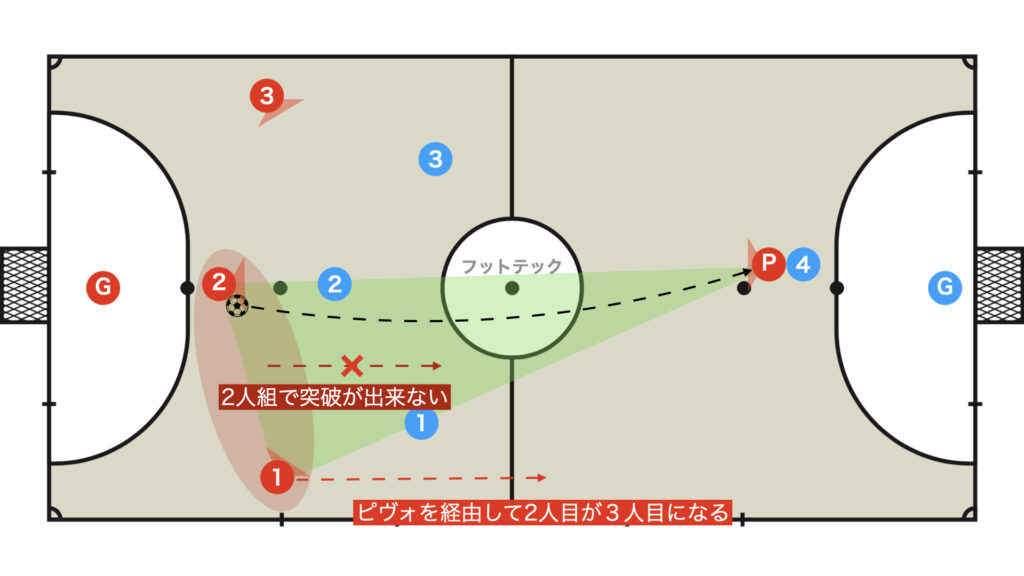
While it is ideal to break down the defense solely with the duo, if the opponent’s defense neutralizes the duo, cancel the duo attack and opt for a pass to the pivo, using the pivo as an intermediary.
At the same time, when the second player (the non-ball handler in the duo) becomes the third, a more robust attack involving the threesome is established.
Since the opposing defense can become ball watchers and lose track of their marks, this threesome approach can be more effective than a simple duo.
The explanation might be a bit abstract and hard to grasp, so I will illustrate with a concrete example.
- Marks remain intact
- There is covering
- Passing lanes are blocked
In cases like these, it is advisable to cancel the duo attack.
One-two
When a one-two cannot be executed
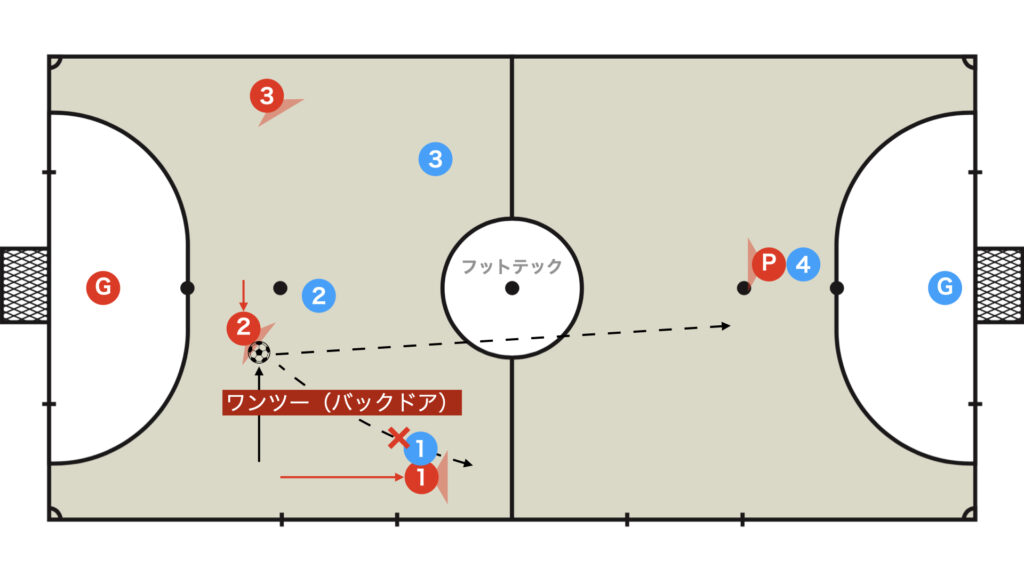
Although a simple one-two was attempted, the opponent’s defense neutralized it, so a pass to the pivo was chosen.
Pass to the pivo: second player → third player
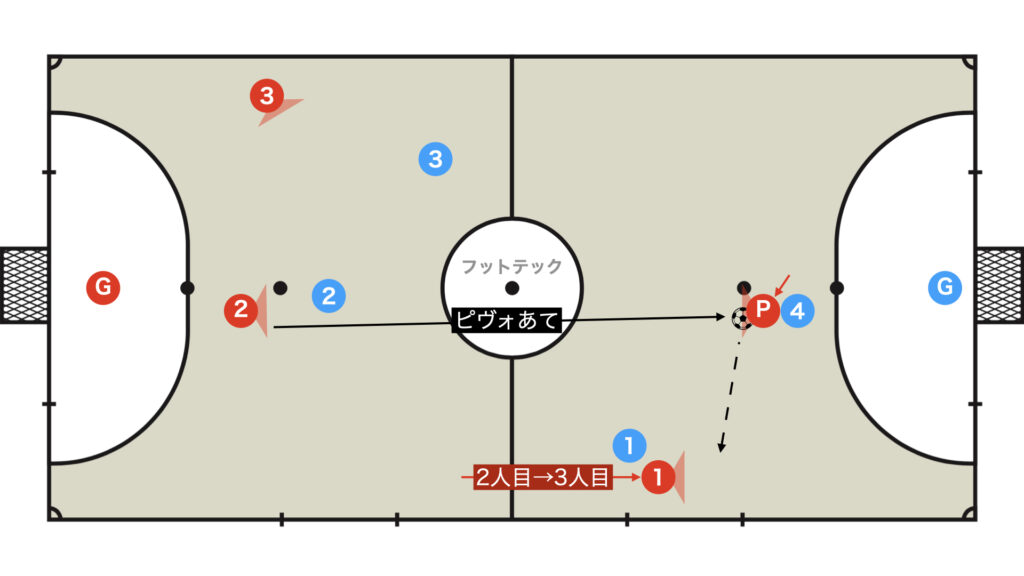
After the pass to the pivo, the second player who broke through via a one-two becomes the third, receiving the ball in a favorable position.
Parallera
When the parallera cannot be executed

Even when the fixo manages to break through with the parallera, the opposing defender (blue jersey #1) cuts off the vertical passing lane (or blue jersey #2 is firmly marking), making it impossible to execute.
Dribble a bit inward to create a passing lane to the pivo
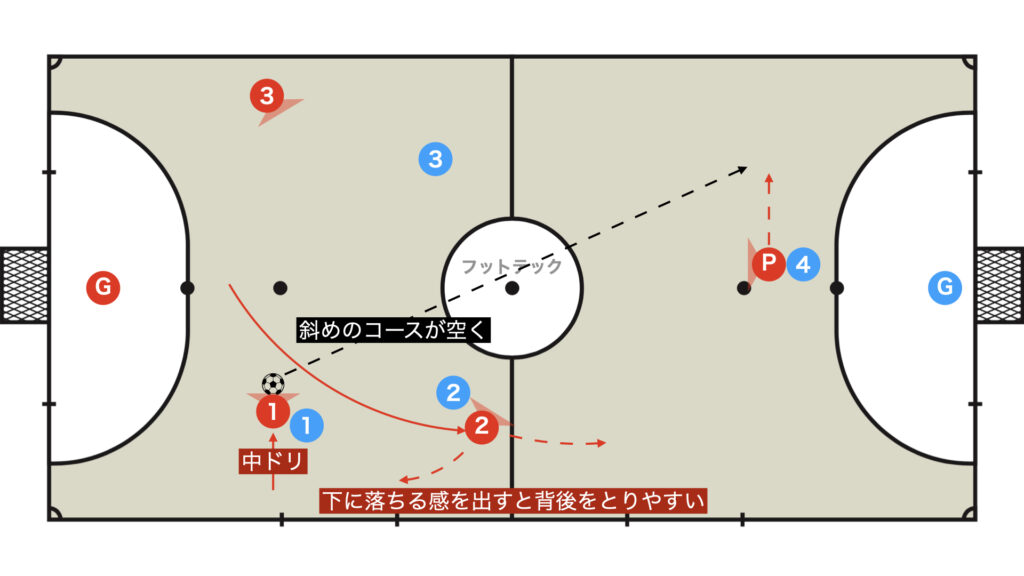
In situations where a pass via the parallera is not available, usually dribbling a bit inward can create a passing lane to the pivo.
At this point, if the player who broke through via the parallera drops slightly, it becomes easier to get behind the opposing defense.
Additionally, if a pass to the pivo is not possible, retreating again can allow the reformation of the 3-1 structure.
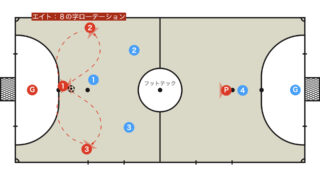
Pass to the pivo: second player → third player
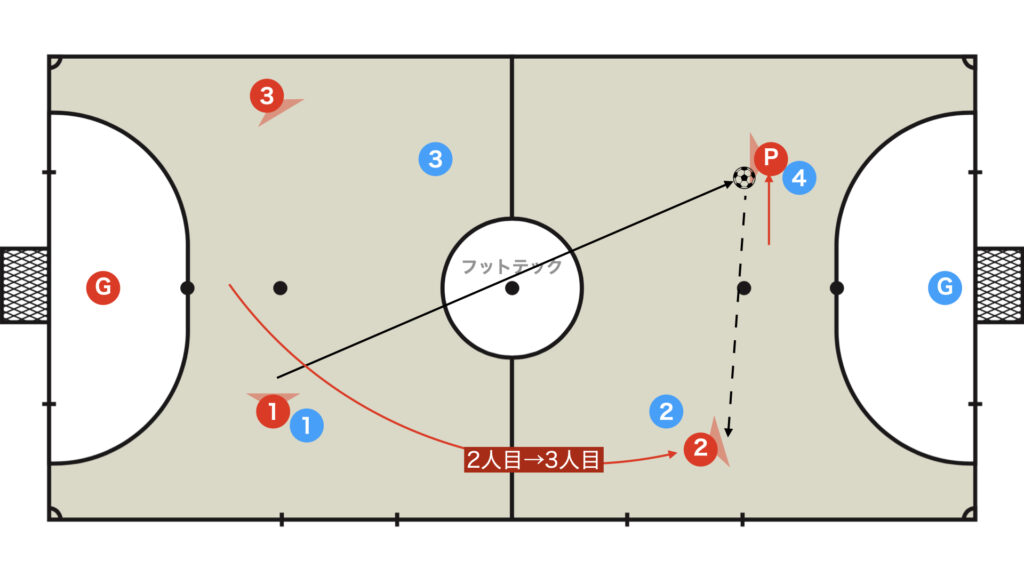
The player who broke through with the parallera becomes the third.
Block or Curtain
Dribble inward to create an angled passing lane to the pivo
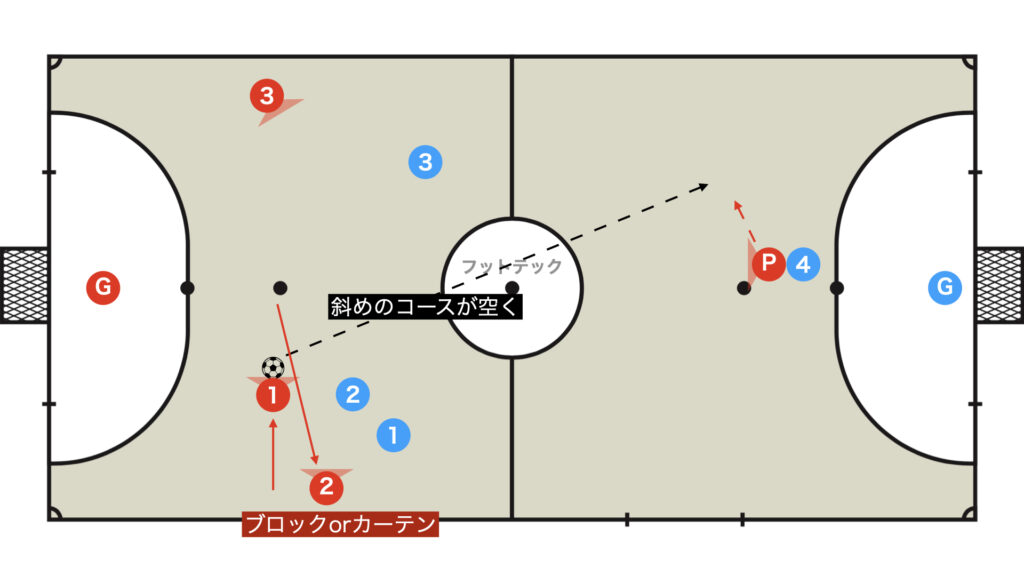
Supporting the ball handler (red jersey #1) with a block or curtain momentarily reduces the pressure on them, allowing for a well-timed pass to the pivo.
Pass to the pivo: second player → third player
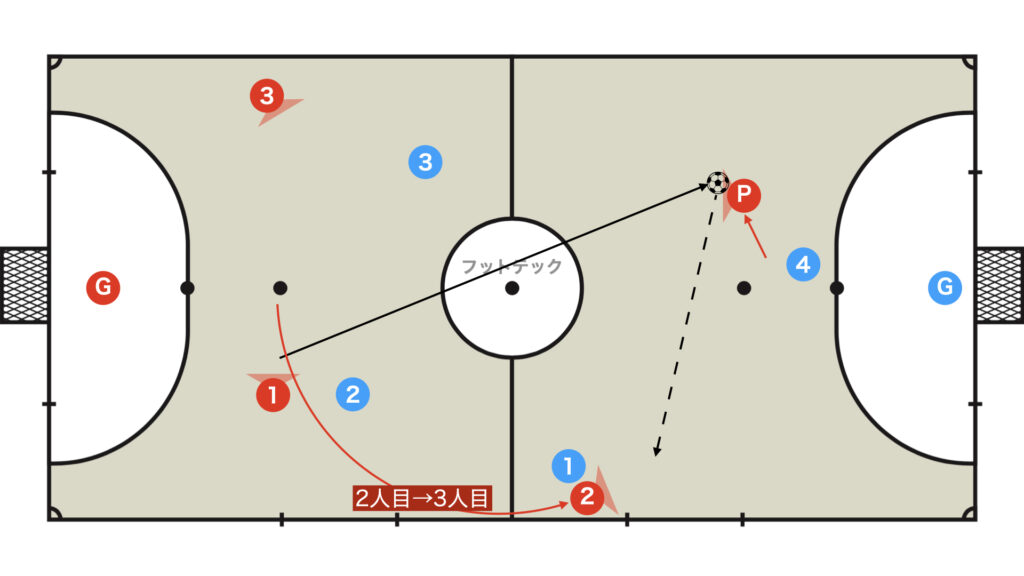
The player executing the block or curtain becomes the third.

Diagonal
When a diagonal pass cannot be executed
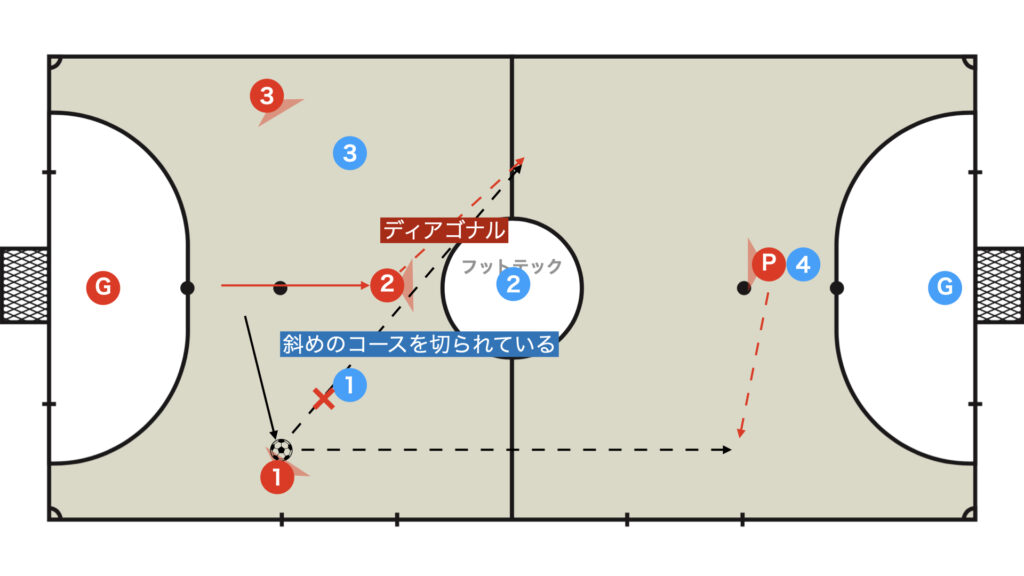
If a pass via Diagonal isn’t available, a vertical passing lane usually opens up, so aim for a vertical pass to the pivo.
Pass to the pivo: second player → third player

The player who broke through with the diagonal becomes the third.
When the third player is not available

If the player who would become the third after the pass to the pivo is ineffective, the player who received the pass to the pivo or the one closest to the pivo will get involved to form a vertical duo (fixo-pivo).
- Turn
- Drop
- Overlap & pisada
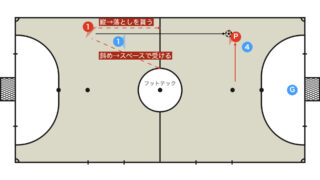
Summary
What did you think?
Didn’t you find it simpler and easier than expected?
Rather than overcomplicating the threesome tactic, by breaking it down into a duo plus one, it becomes much easier to understand.
Conversely, if the quality of the duo is low, you will never be able to form a high-quality threesome.
So, make sure to incorporate the duo and threesome tactics into your daily practice.
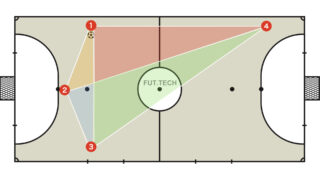
Thank you very much for reading this article to the end.
If you found this article useful, please consider sharing it using the social media share buttons above.
We regularly share valuable insights on futsal tactics on Twitter, so if you haven’t followed us yet, we’d appreciate your support!
We are committed to raising the level of futsal in Japan by sharing high-quality information through discussions with individuals who have coaching experience in the F.League and overseas.
If you have any questions or notice any mistakes, feel free to leave a comment below.
We update our articles regularly, so if you’d like to keep reading, please bookmark our site or search for “FutTech”!
